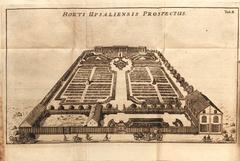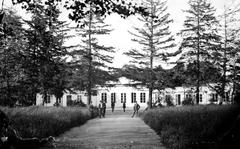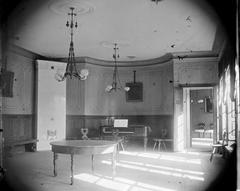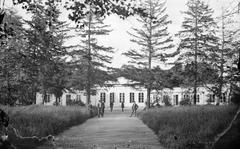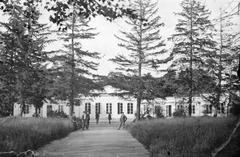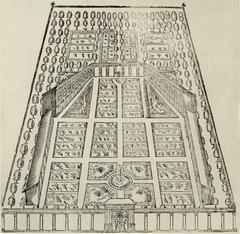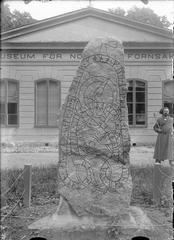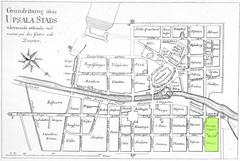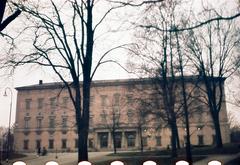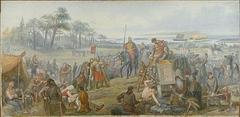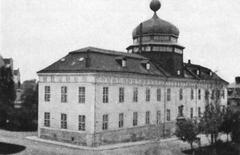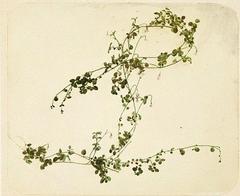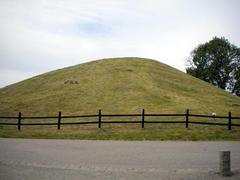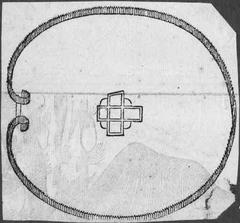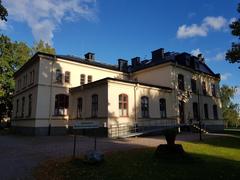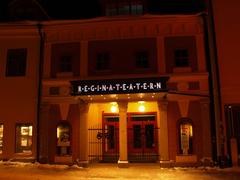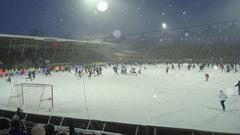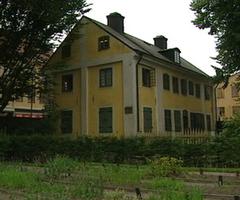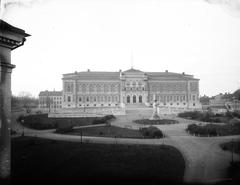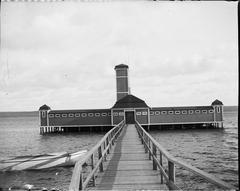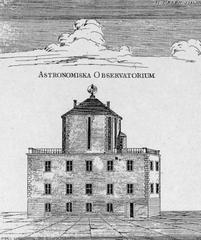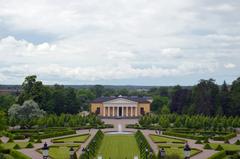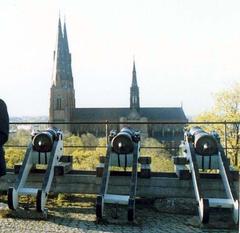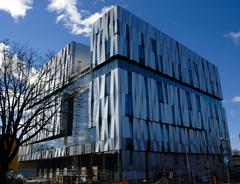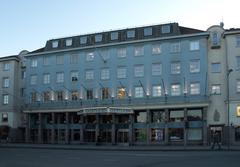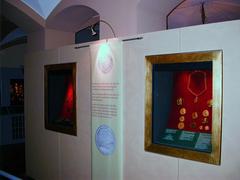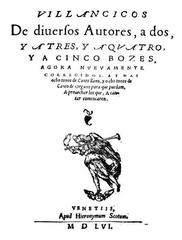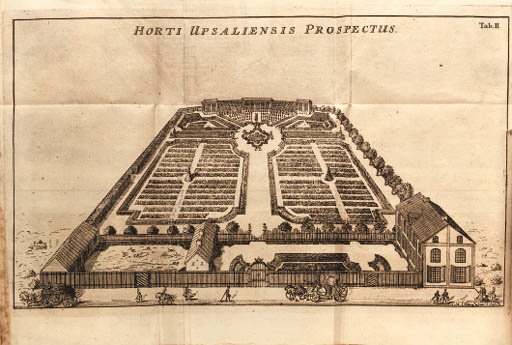
Linnaean Garden Uppsala: Visiting Hours, Tickets, and Complete Guide
Date: 14/06/2025
Introduction
Located in the heart of Uppsala, Sweden, the Linnaean Garden (Linnéträdgården) is the nation’s oldest botanical garden and a living testament to the legacy of Carl Linnaeus, the pioneering botanist who established the foundations of modern taxonomy. Established in 1655 by Olof Rudbeck the Elder, the garden gained international recognition under Linnaeus’s stewardship in the 18th century. Through its meticulously restored beds, historic structures, and educational exhibits, the Linnaean Garden offers visitors an immersive journey into Enlightenment-era science and Swedish cultural heritage (Uppsala University; Visit Uppsala; BGCI).
This guide provides detailed information on the garden’s history, layout, visiting hours, admission, guided tours, accessibility, and nearby attractions, along with practical tips for making the most of your visit.
Table of Contents
- Introduction
- Historical Foundations and Evolution
- Scientific and Cultural Significance
- Garden Layout and Key Features
- Visitor Information
- Special Events and Community Engagement
- Practical Visitor Tips
- Frequently Asked Questions (FAQ)
- Conclusion
- References
Historical Foundations and Evolution
Origins and Early Development (1655–1702)
Founded in 1655 by Olof Rudbeck the Elder, then professor of medicine at Uppsala University, the Linnaean Garden began as Sweden’s first botanical garden (Uppsala University). Rudbeck’s original vision saw over 1,800 plant species cultivated, including Sweden’s first potatoes, serving as a living classroom for medical students (The Crazy Tourist).
The garden flourished until the devastating Uppsala fire of 1702, after which it fell into neglect and partial repurposing for agriculture (Uppsala University).
Linnaeus’s Transformation (1741–1778)
Revitalization came with Carl Linnaeus’s directorship in 1741. Linnaeus, renowned for his binomial nomenclature, redesigned the garden in collaboration with architect Carl Hårleman. The new systematic beds reflected Linnaeus’s taxonomic principles, transforming the space into an international model for botanical research and education (Dumbarton Oaks; Uppsala University).
Relocation and Decline (Late 18th–19th Century)
By 1787, the garden was too small for expanding collections. Under Carl Peter Thunberg, Linnaeus’s student, the main botanical collection relocated to the castle grounds, while the original garden became known as the Linnaean Garden and was used less intensively.
Restoration and Preservation (20th Century–Present)
The Swedish Linnaean Society, founded in 1917, spearheaded the restoration of the garden to its 18th-century layout, using Linnaeus’s own records as a blueprint (Uppsala University). Today, the garden is managed by Uppsala University, with the Linnaeus Museum housed in Linnaeus’s former residence, operated by the Swedish Linnaean Society (BGCI).
Scientific and Cultural Significance
Linnaeus’s Systematic Botany and Taxonomy
Linnaeus’s revolutionary binomial nomenclature system, which classifies plants by genus and species, remains the foundation of modern taxonomy. The garden’s systematic beds, arranged according to these principles, provide a living demonstration of his scientific methodology (BGCI).
Educational and Research Legacy
The garden was the training ground for Linnaeus’s students, known as the “apostles,” who traveled the world collecting plants. Today, it continues to support public education, research, and conservation through workshops, lectures, and integration with university programs (Uppsala University).
Conservation and Biodiversity
While the modern Uppsala University Botanical Garden houses thousands of species, the Linnaean Garden conserves a curated selection significant to Linnaeus’s era, emphasizing historical authenticity and plant biodiversity (BGCI).
Garden Layout and Key Features
Systematic Plant Beds
The garden’s core consists of beds grouped by plant families, with around 1,300 species, both native and exotic, labeled according to Linnaeus’s classification (Destination Uppsala).
The Orangery
Located at the southern end, the Orangery shelters subtropical and tender plants, including four Laurus nobilis trees planted by Linnaeus himself (Coimbra Group PDF). It also serves as an exhibition space in summer.
Water Features and The Pond
A small pond near the systematic beds features aquatic plants and provides habitat for local wildlife (Coimbra Group PDF).
“Monkey Huts”
These thatched shelters, once used by Linnaeus’s students for observation and study, offer insight into 18th-century academic life (Destination Uppsala).
The Linnaeus Museum
Adjacent to the garden, the museum preserves Linnaeus’s original furnishings, scientific instruments, and personal artifacts, enriching the historical context (Destination Uppsala).
Accessibility and Visitor Amenities
- Entrances and Pathways: Main entrance at Svartbäcksgatan 27; flat gravel paths provide reasonable access.
- Café and Shop: Enjoy refreshments and browse botanical-themed souvenirs (Destination Uppsala).
Visitor Information
Opening Hours (2025)
- May: Tuesday–Sunday, 11:00–17:00
- June–August: Monday–Sunday, 11:00–17:00
- September: Tuesday–Sunday, 11:00–17:00
The garden is closed from October to April and on major Swedish holidays. After 5 p.m., the grounds are open free of charge, though facilities may be closed (Uppsala University).
Tickets and Admission
- Adults: 120 SEK
- Seniors (65+) and external students: 100 SEK
- Children under 18 and Uppsala University students/employees: Free
- Annual Pass: 250 SEK (includes entry to Linnaeus Museum, Linnaean Garden, Linnaeus Hammarby, and Tropical Greenhouse)
- Tickets available online, at the museum shop, or garden office (Uppsala University).
Guided Tours and Educational Experiences
- Daily guided tours (11:30 and 14:30) in Swedish; English tours available, especially in summer.
- Thematic tours and workshops can be booked for groups.
- Tour tickets: 50–60 SEK; includes access to the Tropical Greenhouse.
Accessibility
- Most paths are accessible for wheelchairs; some uneven gravel areas.
- Accessible restrooms and staff assistance available (Uppsala University).
Getting There
- Address: Svartbäcksgatan 27, Uppsala
- By foot: 10–15 minutes from Uppsala Central Station
- Public transport: Several nearby bus stops; ample parking in city center (The Crazy Tourist).
Facilities
- Café: Open in summer for traditional Swedish fika.
- Gift Shop: Botanical and Linnaeus-themed souvenirs.
Special Events and Community Engagement
- Annual Linnaean Garden Party: Celebrates Linnaeus’s birthday with reenactments, tours, and workshops (Uppsala University).
- 1700s Market: Historical market with period games and crafts in May.
- Music in the Garden: Seasonal concerts and cultural events.
- Workshops for Families: Interactive educational activities during summer holidays.
Practical Visitor Tips
- Best Time to Visit: Late spring and early summer for peak blooms.
- Combine with Other Attractions: Uppsala Cathedral, Uppsala Castle, Gustavianum Museum, and the modern Botanical Garden.
- Photography: Non-commercial photography permitted; contact staff for professional shoots.
- Weather: Outdoor site—check forecast and dress accordingly.
- Pets: Only service animals permitted.
- Payment: Credit/debit cards accepted throughout.
Frequently Asked Questions (FAQ)
Q: What are the Linnaean Garden’s visiting hours?
A: Open May–September, hours vary by month; see official schedule.
Q: How much are tickets?
A: Adults 120 SEK; discounts for seniors, students; children under 18 enter free.
Q: Is the garden accessible for disabled visitors?
A: Mostly yes—wheelchair-friendly paths and accessible restrooms.
Q: Are guided tours offered in English?
A: Yes, especially during summer. Check schedule for details.
Q: Can I visit the Linnaeus Museum separately?
A: Admission includes both garden and museum.
Q: Can I bring my pet?
A: Only service animals allowed.
Q: Is photography allowed?
A: Non-commercial photography is welcome; professional shoots require permission.
Conclusion
The Linnaean Garden in Uppsala is not only a beautifully restored historic site but also a vibrant center for botanical education and scientific heritage. Whether you are a history enthusiast, a nature lover, or a casual tourist, the garden offers a unique blend of Enlightenment history, living plant collections, and engaging cultural events. With its central location, accessibility, and range of visitor amenities, the Linnaean Garden is an essential stop on any Uppsala itinerary.
To enhance your visit, download the Audiala app for interactive tours and real-time updates, and follow the garden’s social media channels for news on events and exhibitions. Plan your journey today to experience the living legacy of Carl Linnaeus in the heart of Uppsala.
References
- Uppsala University – History of the Linnaeus Garden
- Visit Uppsala – Linnaean Garden
- Destination Uppsala – The Linnaeus Garden
- Uppsala University – Visitor Information
- The Crazy Tourist – 15 Best Things To Do In Uppsala, Sweden
- BGCI – Linnaean Garden Uppsala
- Dumbarton Oaks – Linnaeus’s Gardens
- Coimbra Group PDF – Uppsala Linnaeus Gardens
